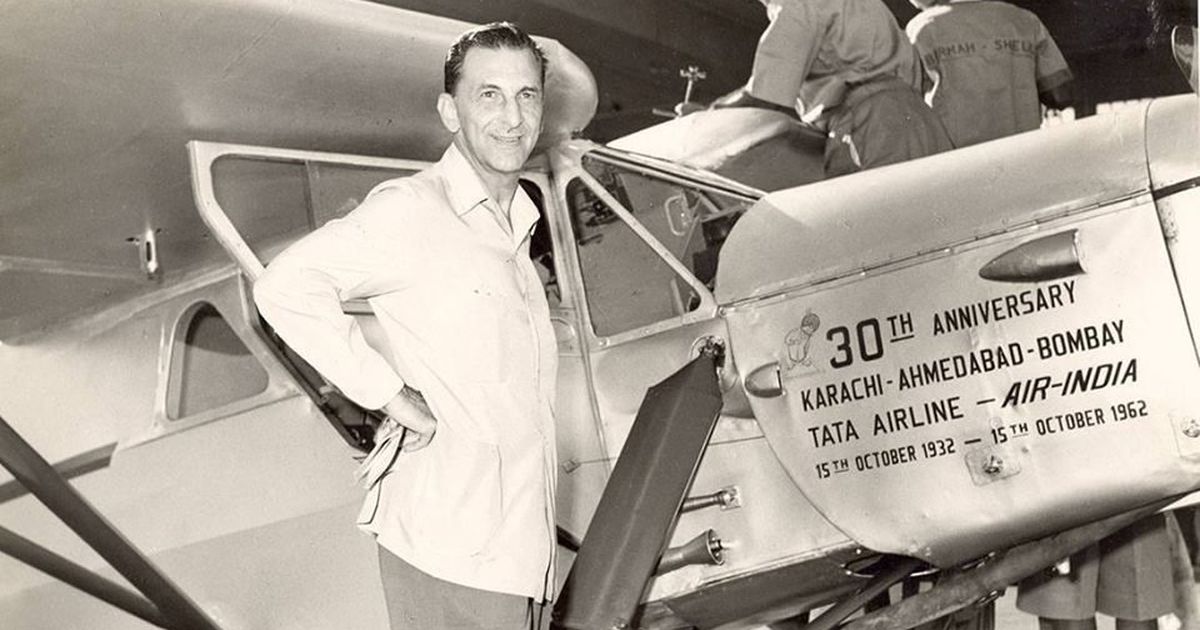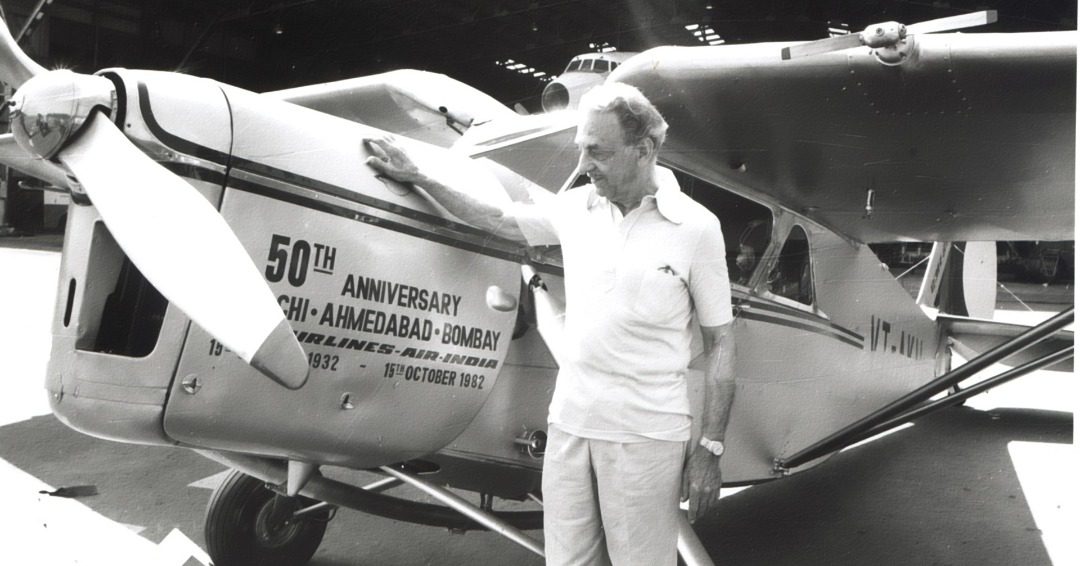(October 12, 2021) Eighty nine years ago when JRD Tata first launched Tata Airlines in October 1932, he created history. He was India’s first licensed commercial pilot and the launch of the airline had given birth to the Indian civil aviation industry. By 1946, the airline was rechristened Air India and soon after launched its international operations. With its world class fleet and services, the airline was considered to be one of the best in the world. The nationalization program had the Indian Government take over the enterprise in the 1950s and turn it into the country’s national airline. For the last six decades and over millions of flights, the airline has been managed by the government: but today, 68 years later, the Maharaja has flown back to the Tata’s stable after the company submitted a winning bid of ₹18,000 crore.
Welcome back, Air India 🛬🏠 pic.twitter.com/euIREDIzkV
— Ratan N. Tata (@RNTata2000) October 8, 2021
Admittedly, the airline had been struggling to flap its wings in the last few years with its aging fleet, declining service quality, and excess staff. Younger and snazzier airlines had overtaken the once most preferred airline that was lurching under the weight of its debts. However, with Tata Group’s takeover all eyes are now back on the Global Indian airline and its parent company. Of the ₹18,000 crore, the government will receive ₹2,700 crore in cash, while the remaining amount will be in the form of debt transfer. Tata Group will now have 100% shareholding of Air India along with Air India Express Limited (AIXL) and AISATS. The group which also owns Vistara and Air Asia will now be a major player in the aviation sector.
The dawn of a new era under JRD
The Tata family was responsible for many firsts in the country. If JRD Tata’s mother was the first woman to drive a car in India, then the former became the first Indian to obtain a commercial pilot’s license. Back in 1929 when the Flying Club had opened in Bombay, JRD had logged long hours to master the art and science of flying. Soon after, he joined hands with his friend Nevill Vincent, a fighter pilot with the British Royal Air Force, to form Tata Airlines with an initial investment of ₹2 lakh. It had taken months of convincing the then chairman Dorabji Tata, but finally JRD’s aviation dreams took wing when the airline operated its first flight on October 15, 1932, ferrying mail from Karachi to Mumbai – JRD himself flew the plane.

The plane had one passenger seat and wealthy businessmen would charter it for ₹50. In its first year, Tata Airlines flew 14 passengers and made a profit of ₹10,000. By 1946, the aviation division of Tata Sons was listed as Air India. In its hey days, Air India was considered to be one of the best airlines in the world. By the time India gained independence, JRD relation with the government too underwent a transformation. In October 1947, the company submitted a proposal to the government to launch Air India international – the government would hold a 49% stake, the Tatas would have a 45% stake and the rest would be public owned. The then Prime Minister Jawaharlal Nehru approved of the idea and within a year, Air India operated its maiden international flight from Bombay to London. It was also the first time that the iconic Maharaja mascot was used.
When the Maharaja flew the nest
However, the post-Independence era was also a time of great change. The nationalization program was underway in a big way and by 1953, the Nehru government decided to nationalize Air India as well. Though indignant at the government’s treatment of India’s air transport industry, JRD had no choice but to hand over the reins. The government paid ₹2.8 crore to buy the rest of Air India’s stock apart from ₹3 crore to purchase other domestic airlines completing the nationalization of the civil aviation industry.

Despite the nationalization, JRD Tata continued to serve as Air India’s chairman for 25 years and was also the board director of Indian Airlines. Throughout this time, he remained deeply involved with the airline’s operations. At the end of Air India’s first AGM, he’d said, “Unless the greatest attention continues to be paid to the high standards of training and discipline amongst flying and ground crews, the resulting deterioration might destroy the good name of Indian civil aviation.” And attention he did pay throughout the next 25 years. According to reports, even when JRD would fly as a passenger himself, he ensured that he took great care of the passengers around him. He would often wander around the flights, making notes of details that needed tending to, be it the décor, the airhostess’ hairstyle, how much wine was poured into a glass to personally cleaning dirty counters or washrooms. As a leader, he’s set some of the highest benchmarks.

JRD Tata paid attention to every minute detail on Air India
This attention to detail paid off. Soon, Air India was racking up the popularity points even internationally. In 1955 when Chinese premier Zhou Enlai was to travel to Indonesia, China chartered an Indian Airlines flight for him. In the 1970s when Singapore Airlines was launched, it collaborated with Air India to learn world-class service standards. In fact, Air India had inspired other Asian carriers like Cathay Pacific and Thai Airways as well.
The nosedive that had a deep impact
However, things took a nosedive soon after. It was in January 1978 when India’s first Boeing 747 crashed into the sea off the coast of Bombay killing all the 213 passengers and crew onboard — one of the greatest air tragedies of the time. Although it was concluded that the crash occurred due to pilot error, a month later the Morarji Desai government chose to drop JRD from the chairmanship of Air India and the directorship of Indian Airlines. At the time, the business tycoon was in Jamshedpur and only learnt of this move from Air Chief Marshal Pratap Chandra Lal, who’d been appointed in his stead.
It was only when Indira Gandhi came back to power in 1980 that JRD was brought back on the board of Air India, where he continued to serve till 1986 when Ratan Tata was appointed as the chairman of the airline by Rajiv Gandhi.
Despite its glory in its hey days, an aging fleet, excess staff, rising fuel prices, controversial leasing contracts, and declining service quality soon began to play spoilsport in the mid 90s. With newer and better airlines coming up, Air India’s image began to take a beating: it was no longer the preferred choice of airline for the millions of Indians. If it was bland food, uncongenial staff, poor seating facilities, or non-functioning entertainment systems that put passengers off the national airline, its mounting debts only made matters worse.
Back to the stable
When the government floated a disinvestment bid for Air India, the Tata Group was among the four bidders to enter the race to take control of the ailing national airlines. As luck would have it, Tatas won the bid and the Maharaja has finally flown back home after more than six decades. Hopefully, the future will see Air India spread its wings once again like it did back in its hey days.


